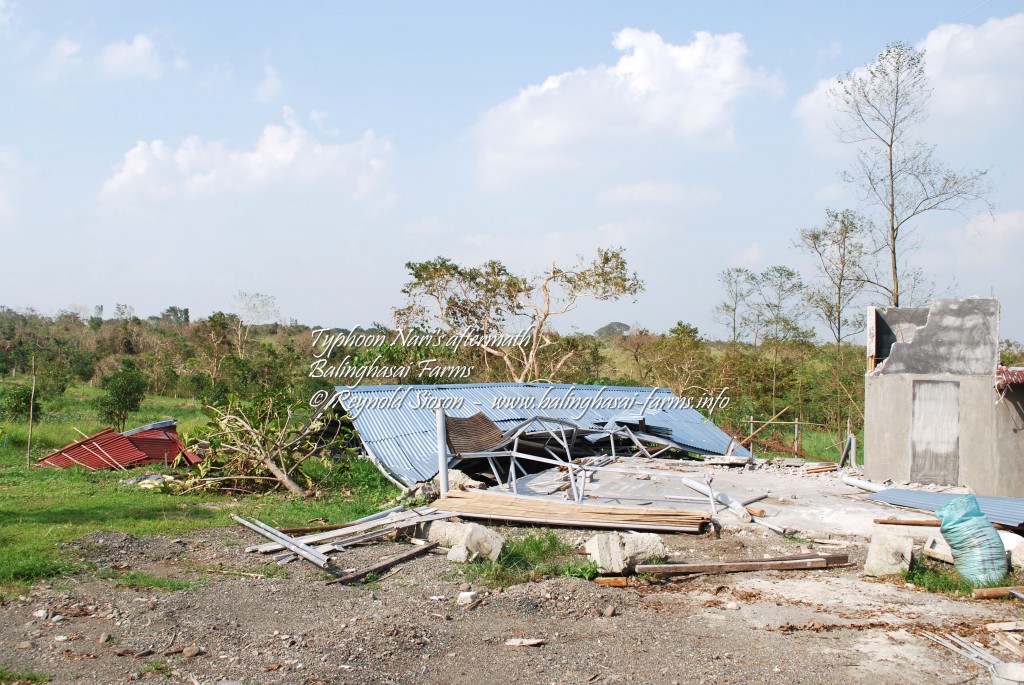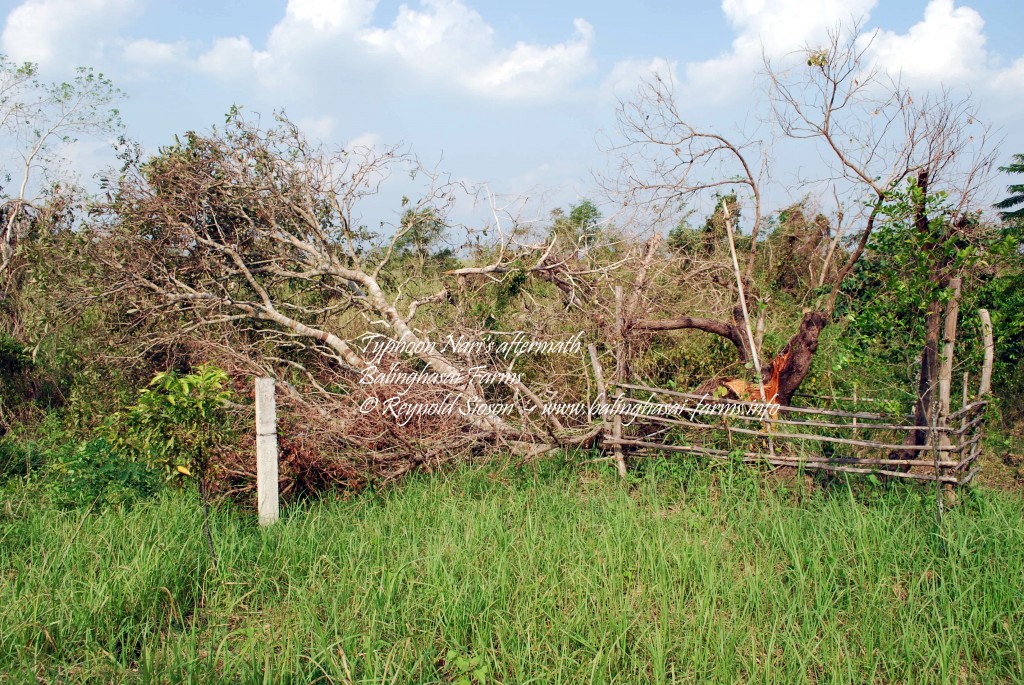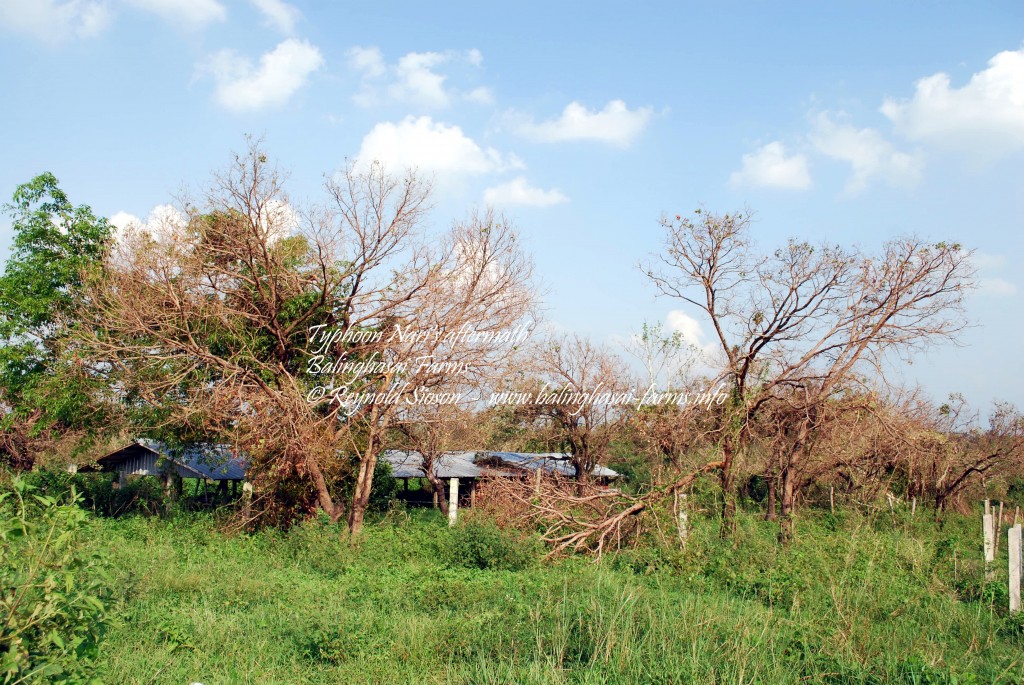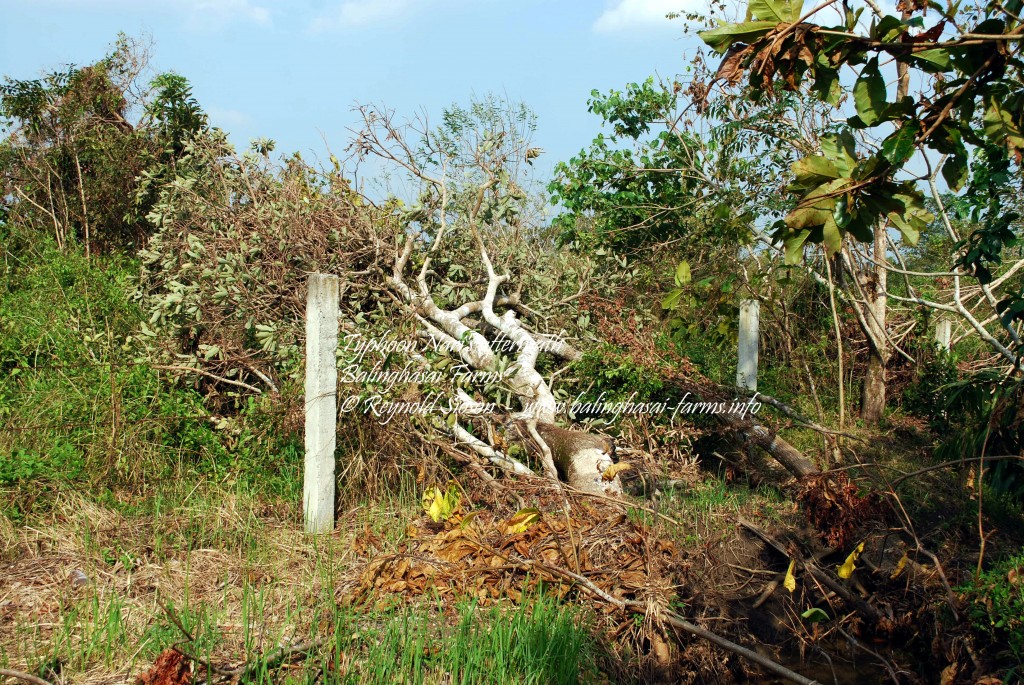21 days after typhoon Nari (Santi) struck Central Luzon, fallen century old Mango and Saman trees still litter the roadsides of rural San Miguel, Bulacan. Rice still lay flattened on the fields, some businesses still closed, some properties still unrepaired; there’s evidence everywhere of the devastating deluge that passed. We were one of those early placed under a state of calamity when unbelievable amount of floodwater surged and sank the town proper and nearby low-lying barangays which reached a record high of 2 meters in some areas of the town. The event, I believe, was a first for us.
The farm has taken it’s share of destruction as well : the once pompous Alibangbang (Bauhinia malabarica) and Ligas (Semecarpus cuneiformis) trees had fallen from grace due to intense wind, Binayuyu (Antidesma ghaesembilla) trees were left standing leafless, felled branches and roofing are strewn about, an hectare of our vegetable crops (Long beans and Bottlegourd) ironed out flat and the helper’s quarter plus the adjacent newly renovated visitor’s area were completely brought down. The sight was a big headache!
Rebuilding and replanting in complete surrender to the forces that shape the world and us, we felt cleansed and lucky to be alive and gifted with another work, another plan, another hope.
(199)






